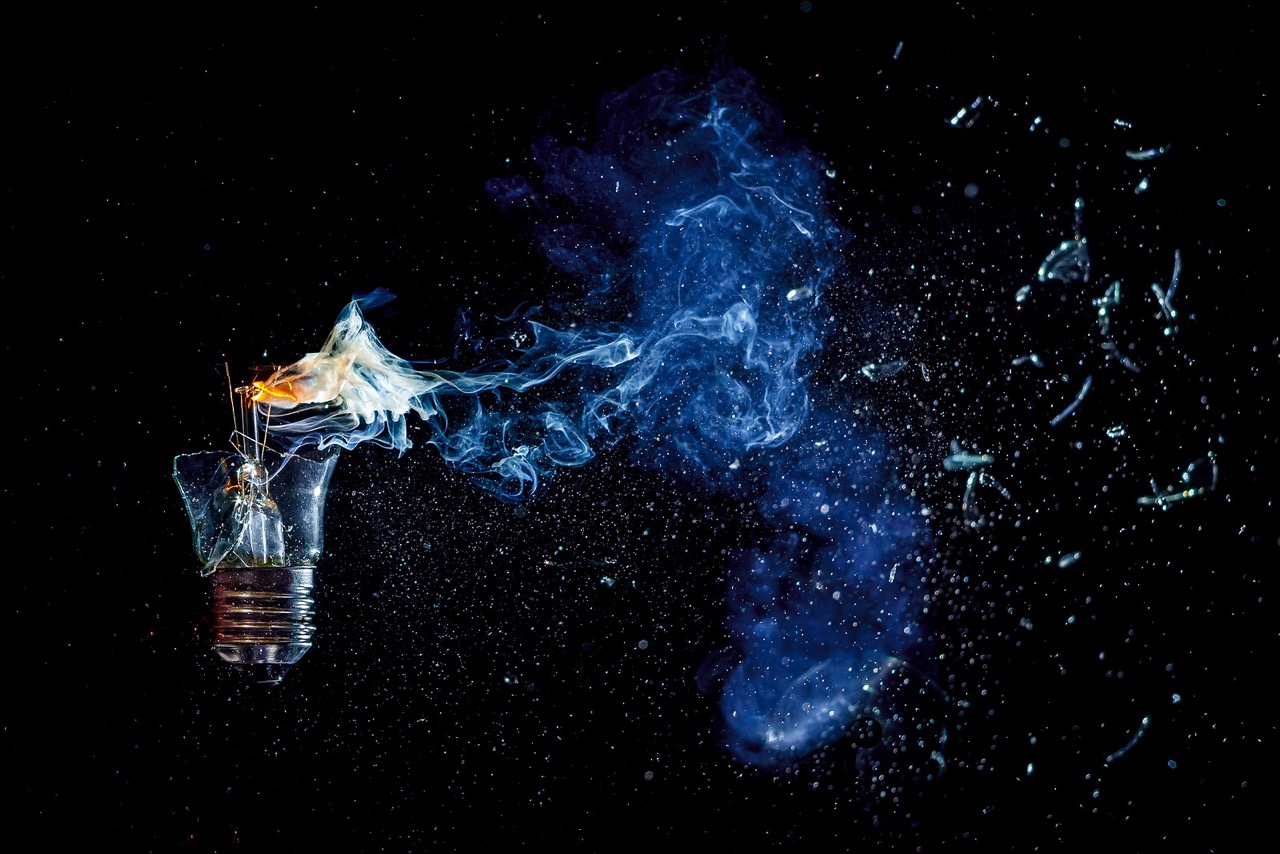

Articles
Why Does A Light Bulb Explode
Modified: February 22, 2024
Learn why light bulbs sometimes explode and how to prevent it. Read our informative articles on this common household issue.
(Many of the links in this article redirect to a specific reviewed product. Your purchase of these products through affiliate links helps to generate commission for Storables.com, at no extra cost. Learn more)
Introduction:
Light bulbs are an essential part of our daily lives, providing us with illumination and comfort in our homes and workplaces. However, in rare cases, light bulbs can unexpectedly explode, leading to potential safety hazards and damage. Understanding why light bulbs explode is crucial in order to prevent such incidents from occurring and ensuring our well-being.
There can be several reasons behind a light bulb exploding, ranging from overheating to defective bulbs, improper handling and installation, power surges, and environmental factors. By delving into the causes and signs of potential bulb explosions, as well as implementing preventive measures, we can safeguard ourselves and our surroundings.
In this article, we will explore the various factors that contribute to light bulb explosions and how we can prevent them. So, let’s shed some light on this illuminating topic.
Key Takeaways:
- Regular maintenance and inspection are crucial to prevent light bulb explosions. Avoid overloading circuits, handle bulbs with care, and use surge protectors for added safety.
- Be vigilant for signs of potential bulb explosions and take immediate action. Proper installation, maintenance, and surge protector usage can significantly reduce the risk of accidents.
Read more: Why Does Tempered Glass Explode
Causes of Light Bulb Explosions:
Light bulb explosions can occur for a variety of reasons. Understanding these causes can help us take the necessary precautions to prevent such incidents:
- Overheating: One of the primary causes of light bulb explosions is overheating. When a light bulb generates excessive heat due to prolonged use or being in close contact with flammable materials, the pressure inside the bulb can build up, causing it to shatter.
- Defective Bulbs: Faulty manufacturing or inadequate quality control can lead to the production of defective bulbs. These bulbs may have structural weaknesses or design flaws that make them more prone to exploding. It is crucial to purchase light bulbs from reputable manufacturers to minimize the risk of using defective products.
- Improper Handling and Installation: Mishandling or improper installation of light bulbs can also result in explosions. If a bulb is screwed or installed too tightly, the pressure can cause the glass to crack or break. Additionally, rough handling or dropping the bulb can weaken its structure, making it more susceptible to explosion.
- Power Surges: Electrical power surges can occur when there is a sudden increase in voltage in the electrical system. These surges can cause the filament in the bulb to rapidly heat up and expand, leading to an explosion. Using surge protectors or voltage regulators can help mitigate the risk of power surges and protect your light bulbs.
- Environmental Factors: Environmental factors such as extreme temperatures, humidity, or vibrations can also contribute to light bulb explosions. Exposure to extreme heat or cold can cause the filament or other components to become fragile, increasing the likelihood of an explosion. Similarly, vibrations from nearby machinery or construction work can cause the bulb to shatter.
By being aware of these causes, we can take proactive measures to reduce the risk of light bulb explosions. In the next sections, we will discuss the signs of potential bulb explosions and the preventive measures we can employ to ensure our safety.
Overheating:
Overheating is one of the primary causes of light bulb explosions. When a light bulb operates for an extended period of time, it produces heat as a byproduct. While some level of heat generation is normal, excessive heat can lead to the degradation and failure of components within the bulb, resulting in an explosion.
There are several factors that can contribute to the overheating of a light bulb:
- Incorrect Wattage: Using a light bulb with a wattage that exceeds the recommended limit for the fixture can cause overheating. The fixture is designed to handle a specific wattage, and using a higher wattage bulb can put excessive strain on the components, including the filament and the insulation.
- Poor Ventilation: Inadequate ventilation around the bulb can trap heat and prevent proper cooling. This is particularly common in recessed or enclosed lighting fixtures where there is limited airflow. The lack of ventilation can cause the heat to build up, eventually leading to an explosion.
- Proximity to Flammable Materials: Placing a light bulb too close to flammable materials such as curtains, fabrics, or paper can cause the surrounding environment to heat up quickly. The heat transfer from the bulb can ignite or melt these materials, increasing the risk of a fire or explosion.
- Extended Usage: Keeping a light bulb turned on for an extended period of time can cause it to overheat. This is especially prevalent in situations where the bulb is left on continuously, such as in outdoor lighting or in places where lights are required to remain on for security purposes. It is important to ensure regular breaks for the bulb to cool down.
To prevent overheating and mitigate the risk of light bulb explosions, here are some recommended practices:
- Always use light bulbs with the correct wattage as recommended by the fixture manufacturer.
- Ensure proper ventilation and airflow around the bulb, especially in recessed or enclosed fixtures.
- Keep light bulbs away from flammable materials, maintaining a safe distance to prevent heat transfer.
- Avoid prolonged and continuous usage of light bulbs, allowing for regular breaks to cool down.
- Consider using LED bulbs, which generate less heat compared to traditional incandescent bulbs.
By being cautious and implementing these preventive measures, we can significantly reduce the risk of overheating and minimize the chances of a light bulb explosion.
Defective Bulbs:
Another common cause of light bulb explosions is the use of defective bulbs. Despite stringent quality control measures, occasional manufacturing defects may occur, leading to the production of faulty light bulbs. These defects can make the bulbs more susceptible to explosions and pose potential risks to both personal safety and property.
Defective bulbs can come with various structural weaknesses or design flaws, increasing the likelihood of explosions. Here are some common factors that contribute to the defectiveness of light bulbs:
- Glass Weakness: Faulty manufacturing processes or substandard materials can result in glass bulbs that are inherently weak. These weak bulbs are more prone to cracking, breaking, or shattering, even under normal operating conditions.
- Seal Issues: The seal at the base of the bulb plays a vital role in maintaining the integrity of the bulb and preventing the entry of dust, moisture, or other contaminants. A defective seal can compromise the bulb’s structural integrity and increase the risk of an explosion.
- Electrical Component Failures: Malfunctioning electrical components within the bulb, such as the filament or the wiring, can contribute to its defectiveness. These failures can cause abnormal heat distribution or electrical surges, leading to a potential explosion.
- Manufacturing Errors: Human errors during the manufacturing process, such as incorrectly positioning components or improper assembly, can result in defective bulbs. These errors can weaken the bulb’s structure and make it more susceptible to explosions.
- Counterfeit Products: The prevalence of counterfeit light bulbs in the market poses a significant risk. Counterfeit bulbs often lack the necessary quality control measures, making them more likely to be defective and susceptible to explosions.
To mitigate the risk of using defective light bulbs and prevent explosions, follow these guidelines:
- Purchase light bulbs from reputable manufacturers or authorized retailers to ensure quality and reliability.
- Inspect the bulbs before installation for any visible defects or damage, such as cracks, loose components, or faulty seals.
- Check for authenticity markings and labels to avoid purchasing counterfeit products.
- If you notice any signs of flickering, abnormal heat generation, or unusual behavior from the bulb, replace it immediately.
- Report any incidents of exploding bulbs to the manufacturer or the relevant authorities to raise awareness and ensure necessary actions are taken.
By being vigilant and proactive in selecting and inspecting light bulbs, we can minimize the risk of using defective bulbs and reduce the likelihood of dangerous explosions.
Improper Handling and Installation:
Improper handling and installation of light bulbs can significantly increase the risk of explosions. Mishandling or incorrect installation techniques can compromise the structural integrity of the bulb, leading to potential accidents and damage. It is essential to follow proper procedures when handling and installing light bulbs to ensure their safe operation.
Here are some common mistakes that can contribute to bulb explosions:
- Tightening Bulbs Too Much: One common mistake is screwing the bulb too tightly into the socket. Over-tightening can exert excessive pressure on the bulb, causing the glass to crack or break. It is important to remember that bulbs only need to be snugly fit, not forced or tightened excessively.
- Using the Wrong Bulb Size: Using a bulb with the wrong size or shape for the fixture can lead to instability and potential accidents. Bulbs that do not fit properly may not make proper electrical contact, resulting in flickering or intermittent operation. Always ensure that you are using the correct bulb size and shape for your specific fixture.
- Hot Bulb Handling: Handling a hot bulb without proper protection can increase the chances of dropping or breaking it. The heat from the bulb can cause discomfort and impair your grip, making it more challenging to handle safely. Allow the bulb to cool down before attempting to replace or handle it.
- Using Damaged Bulbs: Installing a bulb that is visibly damaged, such as with cracks, chipped glass, or loose components, can pose a significant risk. Damaged bulbs are more likely to fail or shatter, leading to potential explosions. Always inspect bulbs before installation and replace any damaged ones immediately.
- Rough Handling: Roughly handling light bulbs, especially when transporting or installing them, can weaken their structure. Dropping or hitting the bulb can cause micro-fractures or stresses in the glass, making it more susceptible to a future explosion. Handle light bulbs with care and avoid any unnecessary roughness.
To ensure safe handling and installation of light bulbs, follow these guidelines:
- Read and follow the manufacturer’s instructions and recommendations for handling and installation.
- Avoid over-tightening bulbs – hand-tighten to the recommended snugness.
- Ensure that you are using the correct bulb size and shape for the specific fixture.
- Allow bulbs to cool down before handling them for replacement or maintenance.
- Inspect bulbs for any visible damage or defects before installation.
- Handle bulbs with care, avoiding rough treatment that can weaken the glass or other components.
By adopting proper handling techniques and ensuring correct installation procedures, we can minimize the risk of bulb explosions and ensure the safe use of light bulbs.
Read more: Why Does Soda Explode In The Freezer
Power Surges:
Power surges are sudden increases in voltage that can occur in electrical systems. These surges can put stress on electronic devices and appliances, including light bulbs. The rapid surge of electrical current can cause the bulb’s filament to heat up more quickly than usual, leading to a potential explosion.
Power surges can happen due to various reasons, including:
- Lightning Strikes: During a thunderstorm, lightning strikes can cause power surges in the electrical grid. These surges can be transmitted through power lines and affect the appliances connected to them, including light bulbs.
- Utility Grid Fluctuations: Fluctuations in the utility’s power grid, such as sudden increases or decreases in voltage, can lead to power surges. These fluctuations can occur due to equipment malfunctions, maintenance work, or changes in power demand.
- Appliance Operation: Power surges can also be caused by the operation of high-powered appliances, such as refrigerators, air conditioners, or washing machines. When these appliances cycle on and off, they can create voltage spikes that affect other devices connected to the same electrical circuit.
- Electrical Faults: Faulty wiring, loose connections, or short circuits within the electrical system can cause power surges. These faults can disrupt the flow of electricity, leading to sudden surges in voltage throughout the system.
To protect light bulbs from power surges and minimize the risk of explosions, consider the following measures:
- Install surge protectors: Use surge protectors between the electrical outlet and the appliances or devices, including light bulbs. Surge protectors can absorb excess voltage and regulate the electrical flow, safeguarding against damage from power surges.
- Unplug during storms: During thunderstorms or inclement weather conditions, unplug light bulbs and other sensitive electronic devices to prevent damage caused by lightning strikes or power grid surges.
- Consult a licensed electrician: If you frequently experience power surges or notice other electrical issues in your home, consult a professional electrician. They can inspect your electrical system and make any necessary repairs or upgrades to mitigate the risk of power surges.
- Use voltage regulators: Voltage regulators can stabilize the incoming voltage from the power grid and prevent voltage fluctuations from reaching your appliances and light bulbs.
Implementing these precautions can help protect your light bulbs from the damaging effects of power surges, ensuring their safe and reliable operation.
Environmental Factors:
Environmental factors can also play a role in light bulb explosions. Certain conditions, such as extreme temperatures, humidity, and vibrations, can contribute to the weakening of light bulbs, increasing the likelihood of explosions.
Here are some environmental factors to consider:
- Extreme Temperatures: Exposure to extreme temperatures can cause the glass and other components of a light bulb to expand or contract rapidly. This thermal stress can lead to cracks or fractures in the bulb’s structure, making it more susceptible to shattering or exploding. Avoid using light bulbs in areas with extreme heat or cold, such as near heating vents or direct sunlight.
- High Humidity: High levels of humidity can lead to moisture buildup within the bulb, especially in outdoor or damp environments. The presence of moisture can compromise the electrical components and insulation, increasing the risk of short circuits and potential explosions. Use moisture-resistant light bulbs in areas prone to high humidity or condensation.
- Vibrations: Constant vibrations or sudden impacts from nearby machinery, construction work, or even heavy footsteps can cause micro-fractures in the glass envelope of a light bulb. Over time, these fractures can accumulate and weaken the bulb’s structure, making it more susceptible to breaking or exploding. Ensure that light fixtures are securely mounted in areas prone to vibrations.
To prevent light bulb explosions due to environmental factors, follow these guidelines:
- Avoid exposing light bulbs to extreme temperatures. Keep them away from heat sources and ensure sufficient ventilation for cooling.
- Choose moisture-resistant light bulbs for areas with high humidity, such as bathrooms or outdoor fixtures.
- Securely mount light fixtures to minimize vibrations and impacts that can weaken the bulbs.
- Regularly inspect the environment where light bulbs are used and replace any damaged or compromised bulbs promptly.
- Consider using LED bulbs, as they are more resistant to temperature fluctuations and environmental stresses compared to traditional incandescent bulbs.
By taking these precautions and being mindful of the environmental conditions, we can reduce the risk of light bulb explosions and ensure the longevity and safe operation of our lighting systems.
Always ensure that the light bulb is cool before handling it. Avoid using bulbs with visible damage or defects. Use the appropriate wattage for the fixture.
Signs of a Potential Bulb Explosion:
While light bulb explosions are rare, there are some signs that may indicate a potential risk of an explosion. By being aware of these signs, you can take appropriate action to prevent accidents and ensure your safety:
- Visible Damage: Inspect your light bulbs regularly for any visible damage, such as cracks, chips, or loose components. Damaged bulbs are more likely to fail and may be at a higher risk of exploding.
- Flickering or Intermittent Operation: If a bulb starts to flicker or experiences intermittent operation, it could be a sign of an underlying issue. This could include a loose connection, a faulty filament, or other electrical problems. Such irregularities should not be ignored, as they may indicate an increased risk of an explosion.
- Excessive Heat: If a light bulb becomes extremely hot to the touch, it may signify an issue. While some heat generation is normal, excessive heat can indicate a problem with the bulb or the fixture. This could be due to overloading, improper wattage usage, or poor ventilation, which can increase the chances of a bulb explosion.
- Strange Odors: Unusual smells coming from a light bulb, such as a burning or melting odor, can hint at a potential problem. Such odors are often associated with overheating or electrical issues, which can lead to bulb failures and explosions.
- Sparks or Smoke: The presence of sparks or smoke when a light bulb is in operation is a clear indication of a serious problem. This could be caused by a short circuit, faulty wiring, or other electrical faults. Immediately turn off power to the affected bulb and have it inspected or replaced by a professional.
If you notice any of these signs, it is important to take immediate action to mitigate the risk of a bulb explosion:
- Turn off the power to the affected bulb and allow it to cool down.
- Inspect the bulb for visible damage and replace it if necessary.
- Make sure the bulb is properly installed and securely connected.
- Check the wattage compatibility of the bulb with the fixture to avoid overloading.
- If the issues persist or worsen, consult a professional electrician for further investigation.
By being attentive to these warning signs and addressing any potential issues promptly, you can reduce the risk of a light bulb explosion and ensure the safety of yourself and your surroundings.
Preventing Light Bulb Explosions:
While light bulb explosions are rare, it is important to take proactive measures to prevent them. By following these preventive steps, you can greatly minimize the risk of bulb explosions and create a safer environment:
- Regular Maintenance and Inspection: Conduct regular maintenance checks of your light bulbs, fixtures, and electrical system. Inspect bulbs for any visible damage, such as cracks or loose components, and replace them when necessary. Clean fixtures and ensure proper ventilation to prevent overheating.
- Avoid Overloading Electrical Circuits: Overloading electrical circuits can increase the risk of bulb explosions. Be mindful of the wattage ratings of your light fixtures and do not exceed the recommended limits. Use multiple circuits or distribute the load to prevent excessive heat buildup and potential electrical faults.
- Proper Installation and Handling: Follow proper installation procedures when replacing or installing light bulbs. Avoid over-tightening bulbs and ensure a secure fit, but be careful not to force or damage them. When handling bulbs, especially when hot, use protective gloves or wait for them to cool down to prevent accidents or damage.
- Using Surge Protectors: Employ surge protectors or voltage regulators to safeguard your light bulbs from power surges. These devices can absorb excess voltage and regulate the electrical flow, providing added protection against fluctuations in the power supply.
- Consider LED Bulbs: LED (Light Emitting Diode) bulbs are known for their energy efficiency and durability. They generate less heat compared to traditional incandescent bulbs, reducing the risk of overheating and explosions. Consider replacing your old bulbs with LED alternatives, which can provide longer-lasting illumination and increased safety.
By incorporating these preventive measures, you can significantly decrease the likelihood of light bulb explosions and promote a safer living or working environment.
Remember, if you encounter any signs of potential bulb explosions, such as visible damage, flickering, excessive heat, strange odors, sparks, or smoke, take immediate action. Replace the affected bulb, investigate the underlying cause, or consult a professional electrician if needed. Prioritizing safety and being proactive in preventative maintenance will help ensure the longevity and safe operation of your light bulbs.
Read more: Why Does My LED Light Bulb Flicker
Regular Maintenance and Inspection:
Regular maintenance and inspection of your light bulbs are crucial to prevent potential bulb explosions and ensure the overall safety of your lighting system. By conducting routine checks and addressing any issues promptly, you can significantly reduce the risk of accidents and damage.
Here are some key steps to follow for regular maintenance and inspection:
- Check for Visible Damage: Inspect your light bulbs regularly for any visible damage, such as cracks, chips, or loose components. Damaged bulbs are more prone to failure and can be at a higher risk of exploding. If you notice any damage, replace the bulb immediately.
- Replace Old or Worn-Out Bulbs: Light bulbs have a limited lifespan, and as they age, they can become more susceptible to failure and explosions. Consider replacing older bulbs, especially if they are nearing the end of their recommended lifespan, to maintain optimal safety.
- Inspect the Fixtures: As part of your regular maintenance routine, inspect the light fixtures themselves. Ensure that they are in good condition and that there are no loose connections, damaged sockets, or wiring issues. Faulty fixtures can increase the risk of bulb explosions, so addressing any problems promptly is essential.
- Clean Fixtures and Ensure Proper Ventilation: Dust and debris can accumulate on light fixtures over time, hindering proper heat dissipation and ventilation. Regularly clean the fixtures to remove any dirt or buildup. Additionally, ensure that the fixtures have adequate ventilation to prevent overheating and reduce the risk of explosions.
- Test the Operation of Bulbs: Periodically test the operation of your light bulbs to ensure they are functioning properly. Check for any signs of flickering, flickering, or abnormal behavior, as these can indicate potential issues. If you notice any irregularities, replace the bulb immediately.
- Consult a Professional: If you are unsure about the condition of your light bulbs or fixtures, or if you notice persistent issues, it is always a good idea to consult a professional electrician. They can perform a thorough assessment, identify any underlying problems, and provide appropriate solutions or recommendations.
By incorporating regular maintenance and inspection into your lighting system’s care, you can detect and address potential issues before they escalate, ensuring the safety and longevity of your light bulbs while minimizing the risk of explosions.
Avoid Overloading Electrical Circuits:
Overloading electrical circuits is a common cause of bulb explosions and can pose significant safety risks. When too many electrical devices are connected to a circuit and draw more power than it can handle, it can lead to overheating, electrical faults, and potential explosions. To prevent overloading, it is important to be mindful of the wattage ratings and capacity of your electrical circuits.
Here are some steps you can take to avoid overloading electrical circuits:
- Know the Wattage Ratings: Understanding the wattage ratings of your electrical circuit and the devices you connect to it is crucial. Each circuit has a maximum wattage capacity, and exceeding this limit can strain the circuit and increase the risk of overheating. Refer to the manufacturer’s recommendations or consult a professional electrician to ensure you stay within the safe wattage range.
- Calculate the Total Load: Determine the total electrical load on a circuit by adding up the wattages of all the devices connected to it. Be cautious not to exceed the circuit’s capacity. If you find that the load is approaching or exceeding the limit, consider redistributing devices to other circuits or upgrading the circuit to handle higher loads.
- Use Multiple Circuits: Distribute the electrical load among multiple circuits when possible. By spreading the load across multiple circuits, you prevent the concentration of power consumption in one area, reducing the strain and minimizing the risk of overloading a single circuit. This is especially important for high-power appliances or areas with many electrical devices.
- Unplug Unused Devices: Unplug devices that are not in use to reduce the electrical load on a circuit. Even in standby mode, some devices continue to draw power, contributing to the overall load. By unplugging unused devices, you free up capacity for other important appliances and reduce the risk of overloading the circuit.
- Upgrade Wiring and Circuit Breakers: If you frequently experience circuit overloads or have outdated wiring, consider upgrading the electrical wiring and circuit breakers in your home. Modern wiring and breakers are designed to handle higher loads and provide better protection against overloading and electrical faults.
By implementing these preventative measures, you can avoid overloading electrical circuits and reduce the risk of bulb explosions. It is important to be aware of the specific electrical requirements of your devices, stay within the recommended wattage limits, and consult a professional electrician for any necessary upgrades or modifications to your electrical system.
Proper Installation and Handling:
Proper installation and handling of light bulbs are essential for maintaining their safety and preventing potential explosions. By following correct procedures, you can ensure that the bulbs are securely installed and minimize the risk of accidents and damage. Here are some guidelines to help you with proper installation and handling:
- Screw Bulbs Properly: When installing bulbs, ensure they are screwed in properly, but avoid over-tightening. Over-tightening can exert excessive pressure on the bulb, causing the glass to crack or break. Bulbs should be snugly fit, but not forced or tightened excessively.
- Use the Correct Bulb Size: It is crucial to use the correct bulb size and shape for your specific fixture. Using the wrong size can lead to instability and potential accidents. Bulbs that do not fit properly may not make proper electrical contact, resulting in flickering or intermittent operation. Always refer to the manufacturer’s recommendations and guidelines.
- Handle Bulbs with Care: When handling light bulbs, especially when installing or replacing them, exercise caution. Avoid applying excessive force or pressure that can damage the bulb. If a bulb is hot, use protective gloves or wait for it to cool down before handling. Dropping or hitting the bulb can weaken its structure, increasing the chances of a future explosion.
- Avoid Touching the Glass: Whenever possible, avoid touching the glass envelope of the bulb with bare hands. The oils and residue from your skin can transfer to the bulb, causing hotspots and compromising its structural integrity. If you do touch the glass, use a clean cloth or tissue to wipe it off before installing the bulb.
- Follow the Fixture’s Instructions: Each light fixture may have specific instructions for bulb installation and handling. It is important to read and follow these instructions carefully to ensure proper installation and safe operation. If you have any doubts or questions, consult the manufacturer or a professional electrician for guidance.
- Always Turn Off Power: Before installing or replacing a light bulb, make sure the power to the fixture is turned off. This precautionary step prevents accidental shocks or electrical accidents. Use the appropriate safety measures, such as turning off the circuit breaker or using a voltage tester, to ensure the power is completely off before working with the bulb.
By adhering to these guidelines for proper installation and handling, you can reduce the risk of bulb explosions and ensure the safe operation of your lighting system. Additionally, if you are uncertain about any aspect of bulb installation or encounter any issues during the process, do not hesitate to seek assistance from a professional electrician.
Using Surge Protectors:
Surge protectors are essential devices for safeguarding your light bulbs and other electronic devices against power surges. Power surges can occur due to lightning strikes, utility grid fluctuations, or appliance operation, and they can significantly increase the risk of bulb explosions. By using surge protectors, you can protect your bulbs from these voltage spikes and ensure their safe operation. Here’s how surge protectors can help:
1. Absorb Excess Voltage: Surge protectors are designed to absorb and redirect any excess voltage that could potentially damage your light bulbs. They provide a buffer between the power source and the connected devices, ensuring that any sudden voltage surges are controlled and distributed properly.
2. Regulate Electrical Flow: Surge protectors regulate the flow of electricity to maintain a stable and safe level for your light bulbs. They prevent sudden spikes or drops in voltage from reaching your bulbs, mitigating the risk of overheating, electrical faults, and potential bulb explosions.
3. Provide Multiple Outlets: Surge protectors typically come with multiple outlets, allowing you to connect multiple devices, including light bulbs, to a single surge-protected power source. This eliminates the need for individual surge protectors for each device, simplifying your setup and providing consistent protection.
4. Indicator Lights and Protection Status: Many surge protectors come equipped with indicator lights that display the status of the protection they provide. These lights indicate if the surge protector is working properly or if it needs to be replaced. Regularly check the indicator lights to ensure that your surge protectors are functioning effectively.
5. Additional Features: Some surge protectors offer additional features like phone line and coaxial cable protection, USB charging ports, and timed outlets. Consider your specific needs and choose a surge protector that provides the necessary features to protect your light bulbs and other electrical devices.
6. Proper Usage: To ensure the effectiveness of surge protectors, it is important to use them correctly. Connect your light bulbs and other devices directly to the surge-protected outlets. Avoid daisy-chaining or using extension cords, as these can bypass the surge protection and increase the risk of damage. Regularly inspect and replace surge protectors if they are damaged or if the protection status lights indicate a problem.
7. Consider Whole-House Surge Protection: For enhanced protection, you can consider installing whole-house surge protection. This system is installed in your electrical panel and provides surge protection for your entire home, including all the light bulbs and other devices connected to the electrical system. Consult a professional electrician to determine the best options for your specific needs.
Using surge protectors is a prudent step in safeguarding your light bulbs from power surges and minimizing the risk of explosions. Be sure to choose surge protectors that are suitable for your electrical needs, follow the manufacturer’s instructions for installation and usage, and regularly inspect them for proper function. By doing so, you can protect your light bulbs, extend their lifespan, and ensure a safe and reliable lighting system.
Read more: Why Is The Light Bulb Important
Conclusion:
Light bulb explosions are rare, but understanding the causes and taking preventive measures can help reduce the risk and ensure your safety. Overheating, defective bulbs, improper handling and installation, power surges, and environmental factors can all contribute to the possibility of a light bulb explosion. By being attentive to signs of potential bulb explosions, such as visible damage, flickering, excessive heat, strange odors, sparks, or smoke, you can take immediate action to mitigate the risk.
Preventing light bulb explosions requires regular maintenance and inspection of your bulbs, fixtures, and electrical system. Avoid overloading electrical circuits by understanding the wattage ratings of your devices and redistributing the load when necessary. Proper installation and handling of light bulbs are crucial to maintain their safety. Always follow recommended procedures, screw bulbs properly without overtightening, use the correct bulb size, and handle bulbs with care.
Using surge protectors can provide an extra layer of protection against power surges that can lead to bulb explosions. Surge protectors absorb excess voltage, regulate electrical flow, and provide multiple outlets for connecting devices. Ensure you are using surge protectors correctly and replace them when necessary.
In conclusion, by following these guidelines and practicing proper maintenance, inspection, and handling, you can minimize the risk of light bulb explosions and create a safer environment. Stay vigilant, address any signs of potential issues promptly, and consult a professional electrician if needed. By prioritizing safety, you can enjoy the benefits of illumination while maintaining peace of mind.
Frequently Asked Questions about Why Does A Light Bulb Explode
Was this page helpful?
At Storables.com, we guarantee accurate and reliable information. Our content, validated by Expert Board Contributors, is crafted following stringent Editorial Policies. We're committed to providing you with well-researched, expert-backed insights for all your informational needs.

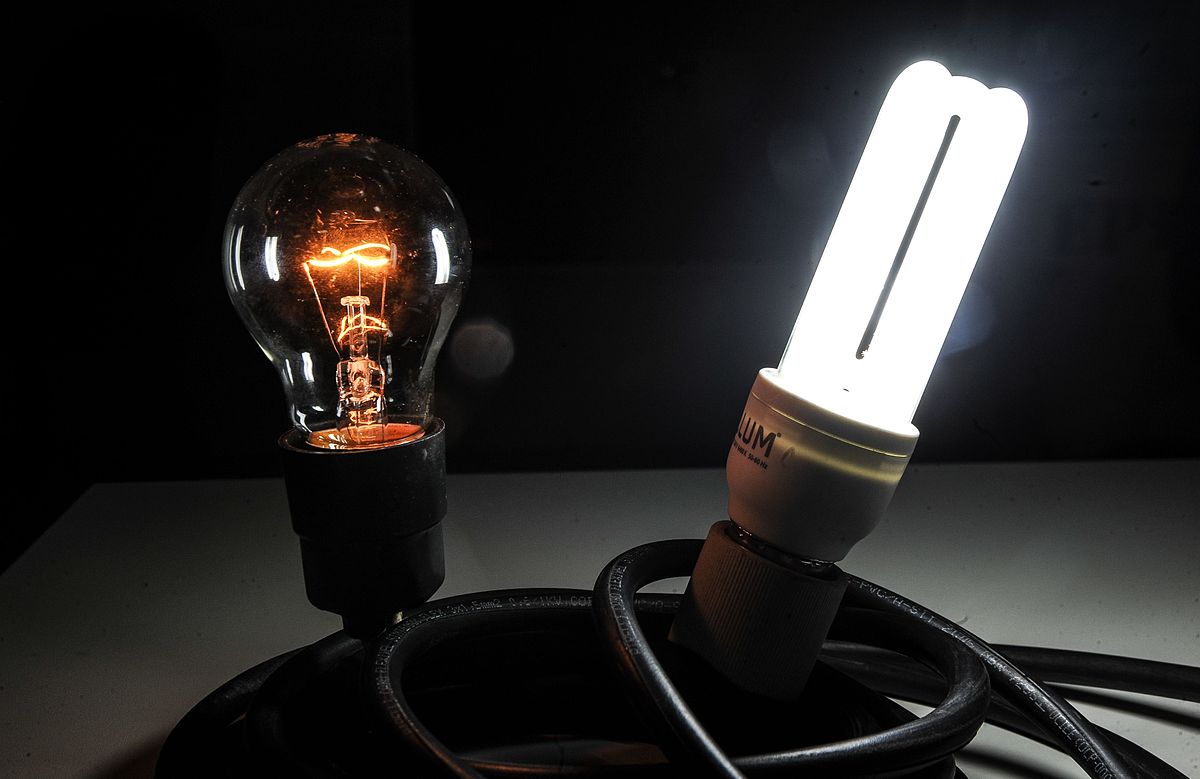
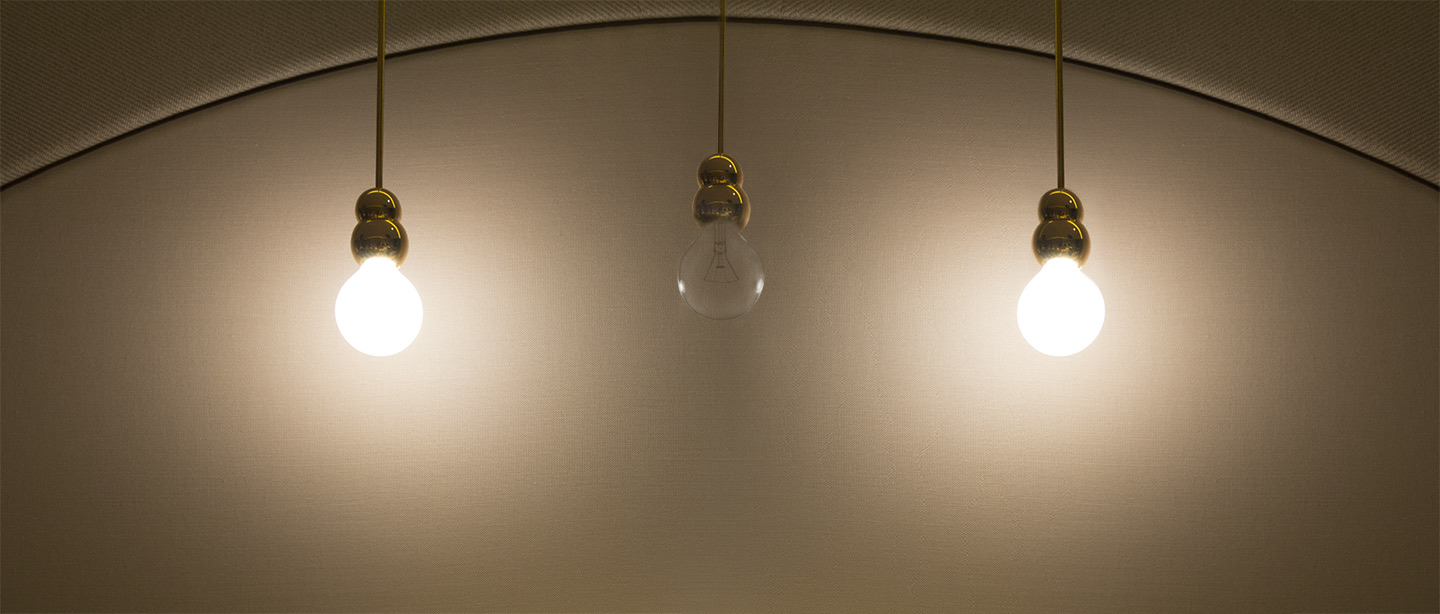
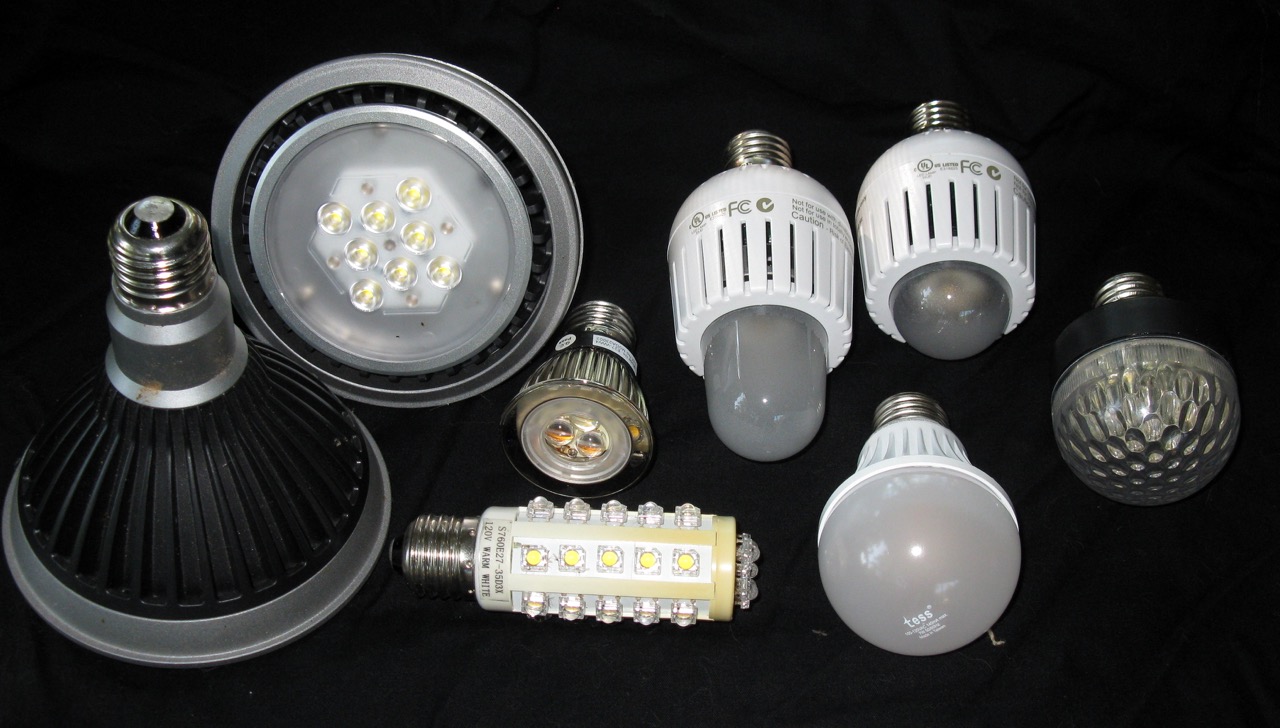
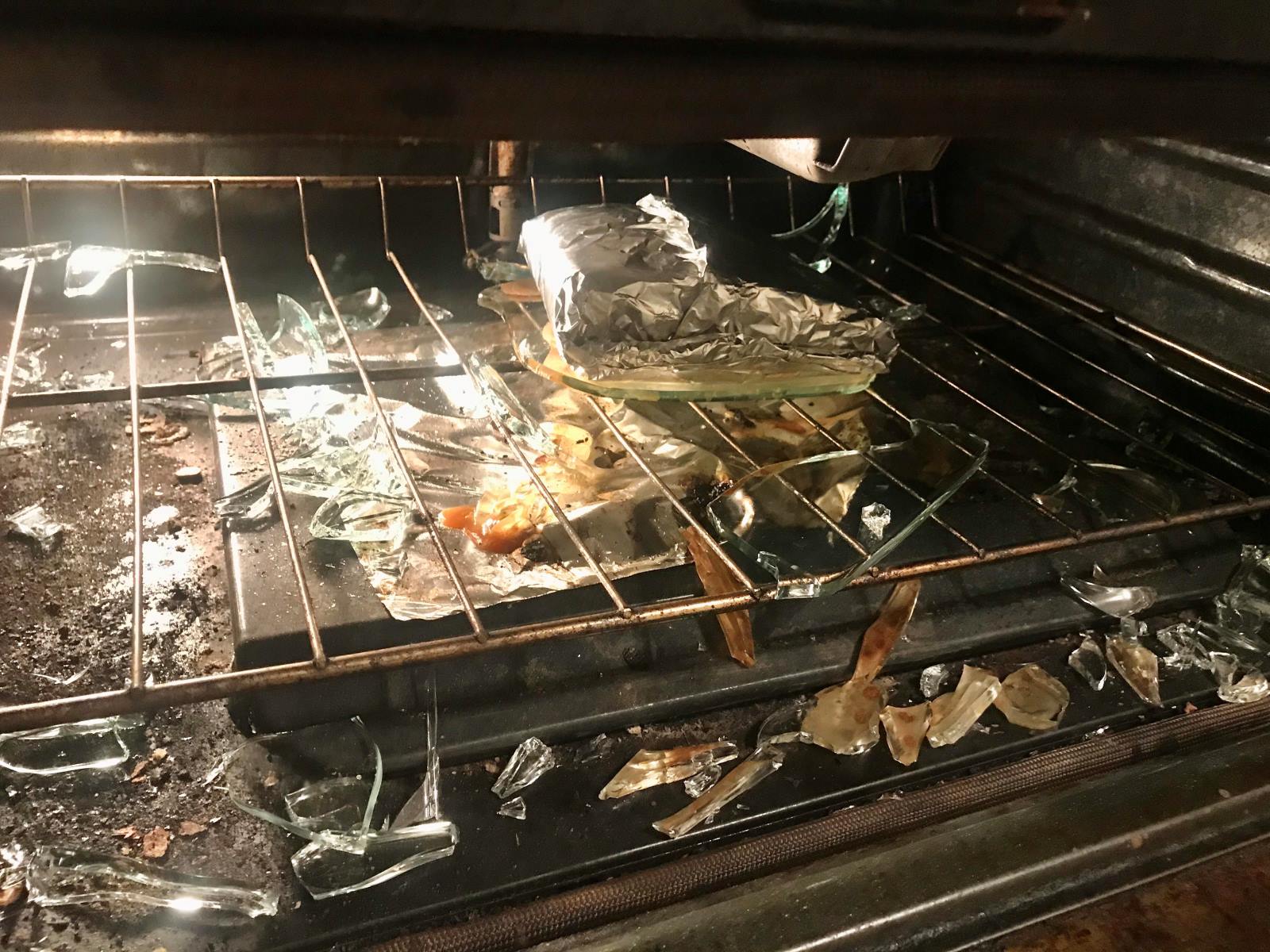
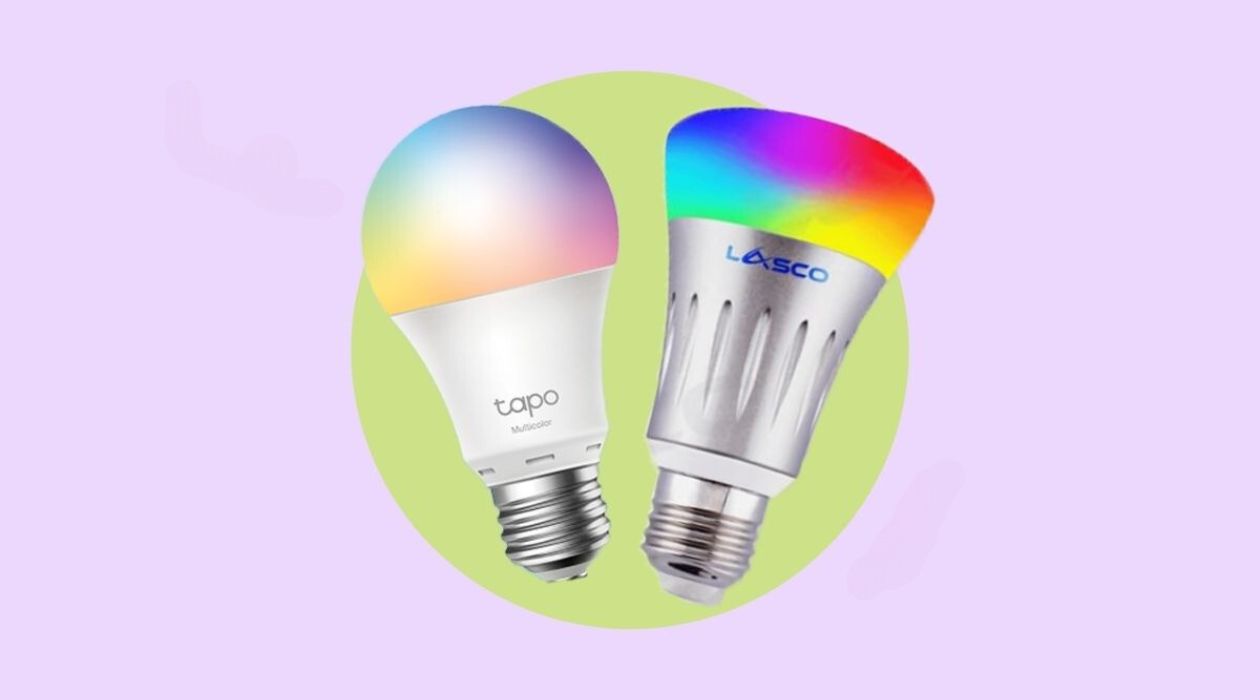
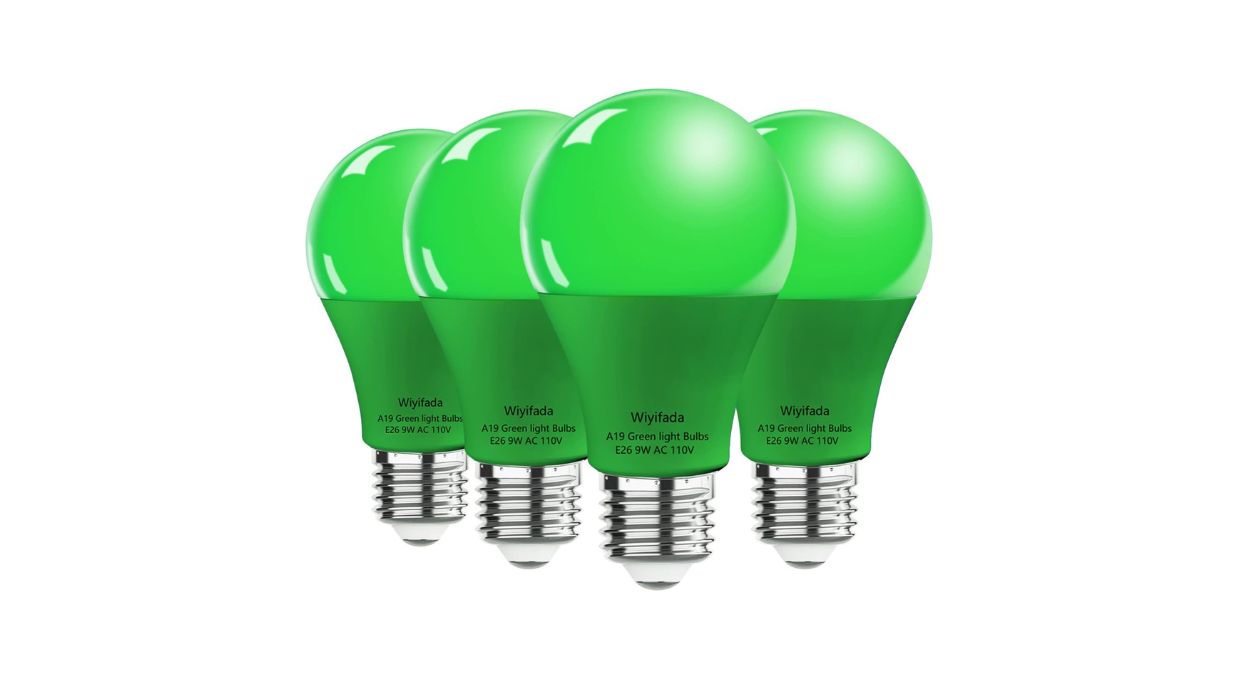
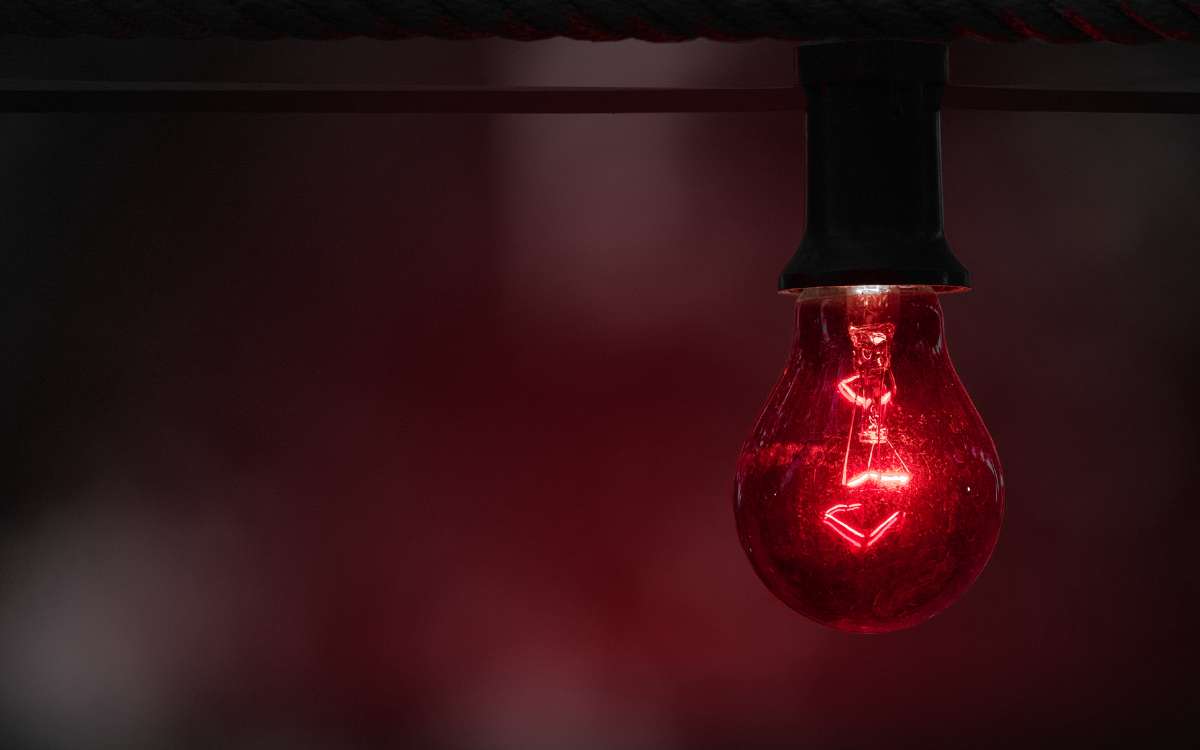
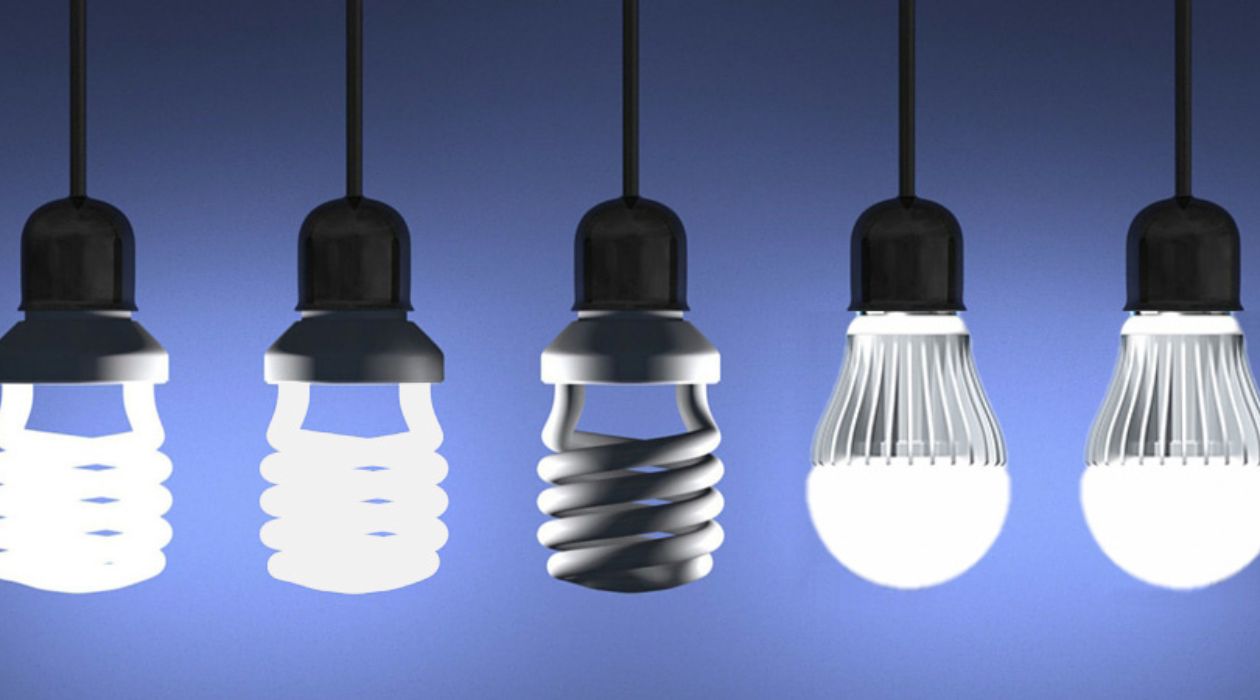

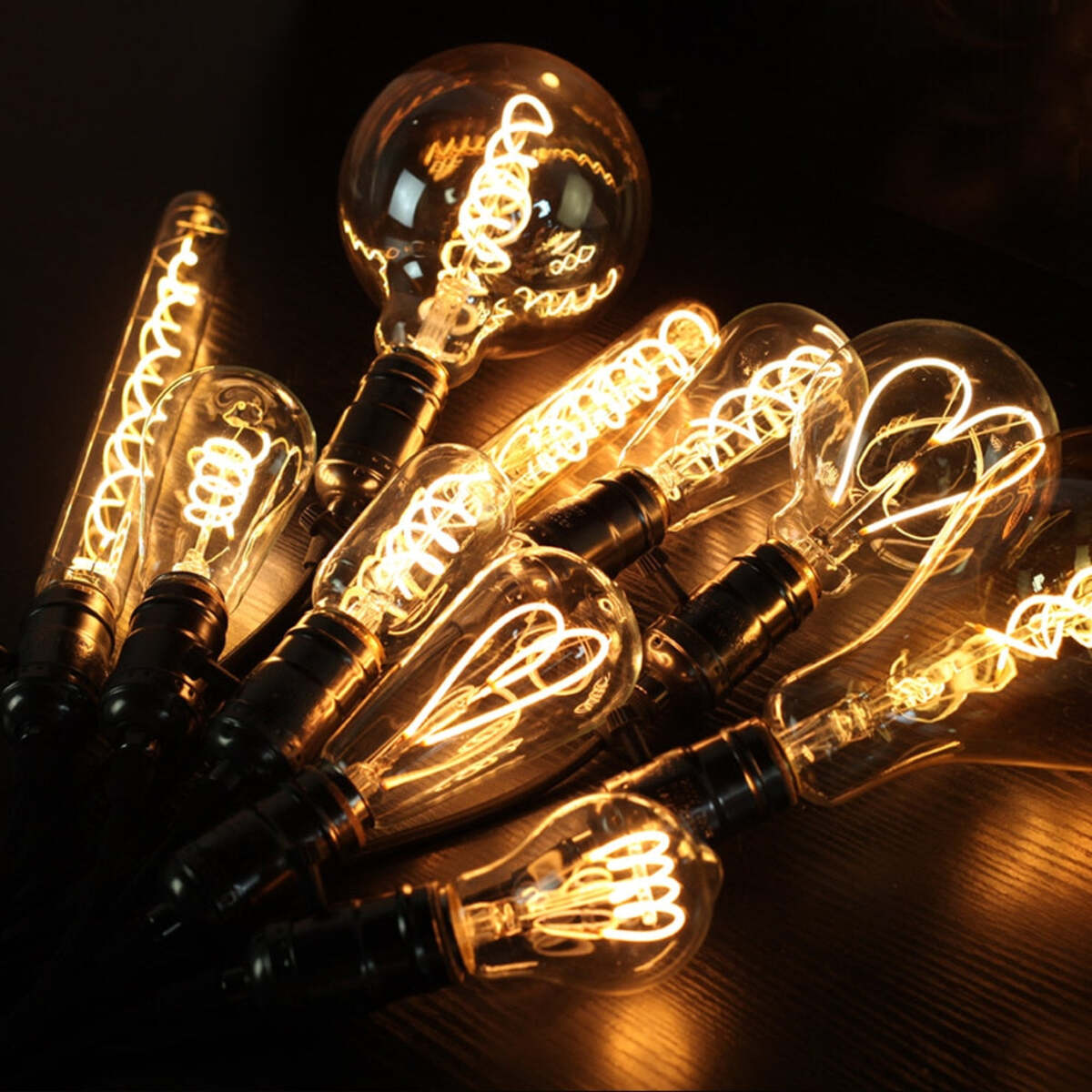
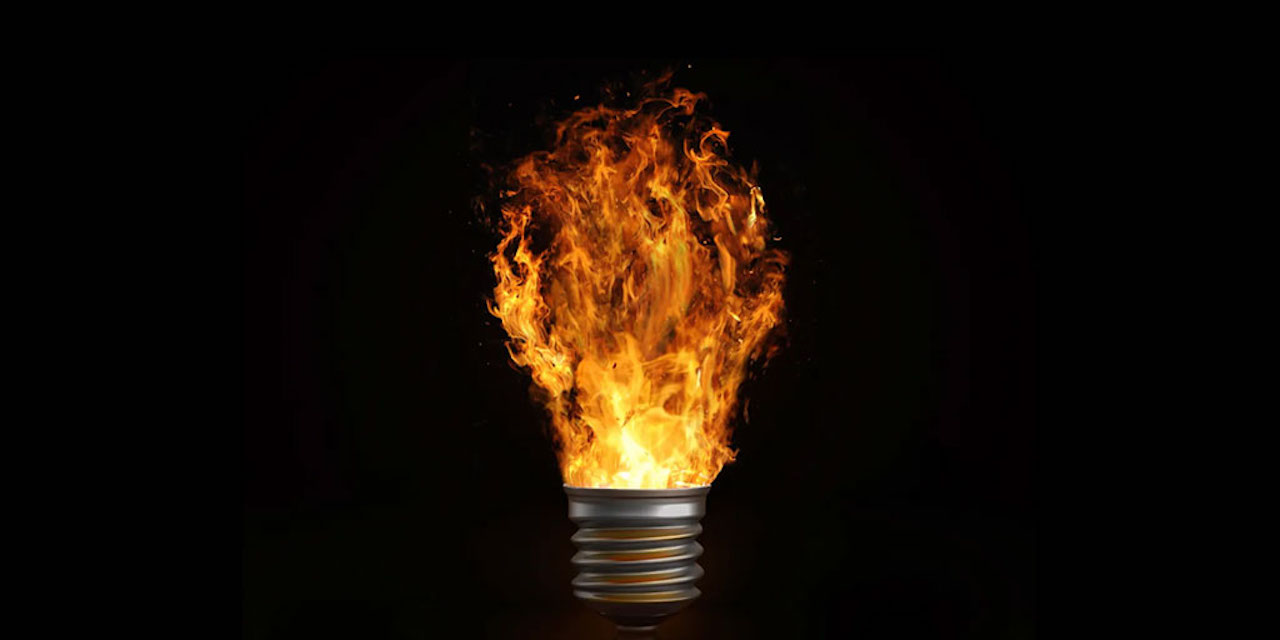

0 thoughts on “Why Does A Light Bulb Explode”